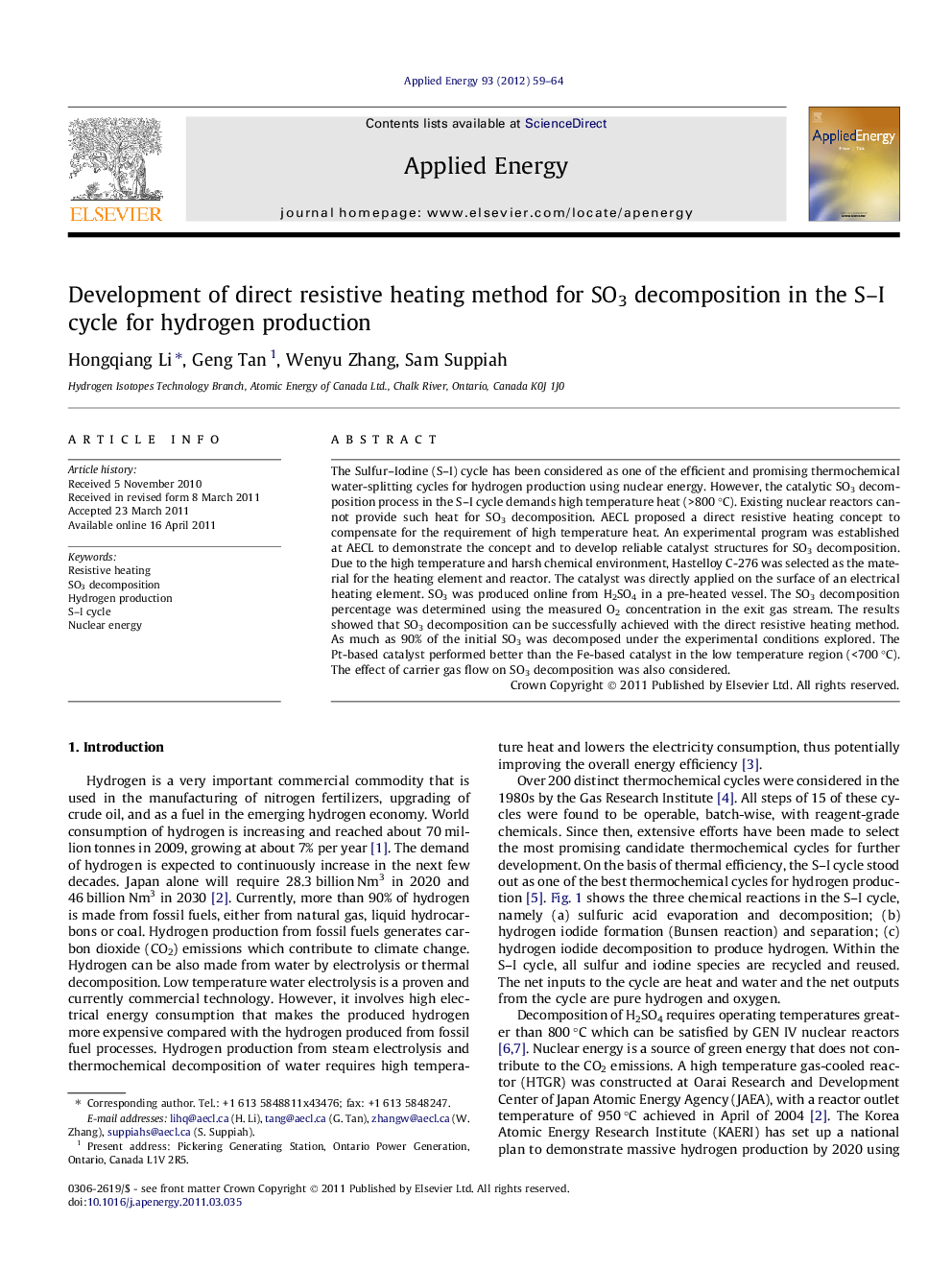| Article ID | Journal | Published Year | Pages | File Type |
|---|---|---|---|---|
| 243306 | Applied Energy | 2012 | 6 Pages |
Abstract
The Sulfur–Iodine (S–I) cycle has been considered as one of the efficient and promising thermochemical water-splitting cycles for hydrogen production using nuclear energy. However, the catalytic SO3 decomposition process in the S–I cycle demands high temperature heat (>800 °C). Existing nuclear reactors cannot provide such heat for SO3 decomposition. AECL proposed a direct resistive heating concept to compe
Related Topics
Physical Sciences and Engineering
Energy
Energy Engineering and Power Technology
Authors
Hongqiang Li, Geng Tan, Wenyu Zhang, Sam Suppiah,
